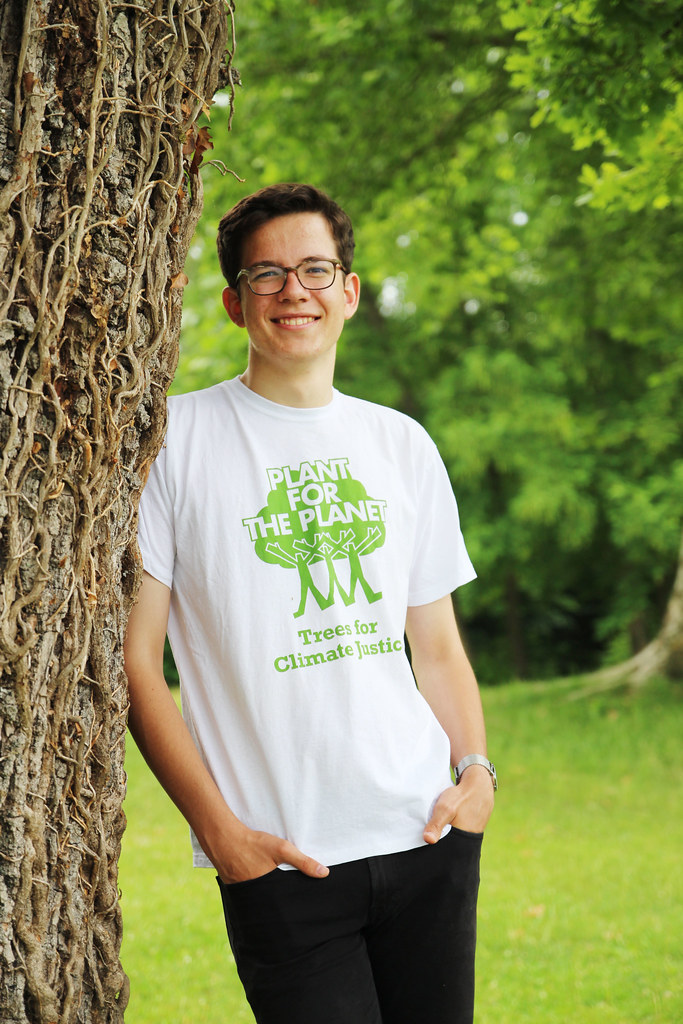Or listen in your favorite podcast app
Apple Podcasts / Google Podcasts / Spotify
When you were in fourth grade, how’d you pass the time? Maybe playing with Legos, building forts, or playing tag. What you probably weren’t doing is developing the foundation of an organization that would make a global impact.
And that brings us to Felix Finkbeiner, the thoughtful kid who was doing just that. Today, Felix is the founder of Plant for the Planet, and on this episode of IT Visionaries, he explains his mission, how technology is helping to connect organizations all over the world, and why the One Trillion Trees project is something he is hoping can positively impact the planet in huge ways.
Key Takeaways:
- We might not be able to replace all of the trees that have been cut down, but we can plant enough to make a significant positive impact
- Technology like the Plant For The Planet app is helping connect and build transparency amongst the many partners and organizations working on the One Million Trees Initiative
- The initial challenge of the organization was getting people to care, but now that people do care, the challenge is scaling and building an infrastructure capable of doing the things you want to do
About Plant for the Planet
When Felix was in fourth grade, he was giving a presentation about the climate crisis. While he was preparing for his report, he was inspired by a woman who had been doing conservation work in Africa to fuel the empowerment of women. He was driven to do more for the planet, so he started planting trees and invited his classmates to join him. Within three years, the project had turned into a full-blown organization that had planted one million trees and had inspired a number of other people and organizations to get involved. By year three, they officially became a foundation and has been growing ever since.
“I didn’t really understand the depth of her great work back then, but I did understand how planting trees helps us fight the climate crisis. And this is why back then, I recommended or suggested to my classmates that we should be planting trees and we should plant one million trees for each country of the world.”
Growth reached a new level for Plant for the Planet in 2011, when the UN reached out to the organization to take over the One Billion Tree campaign. At that point, Felix explains that the hard work of putting a plan into action went into overdrive. They had to find out how many trees there were in the world and how many they would be able to plant in order to make a difference. The research revealed that there are currently three trillion trees, but before humans started cutting them down, that number was actually double. Because we need land for agriculture, settlements, and other human activity, we can’t go back to six trillion trees, but we can still make a difference. There is room on the planet to add one trillion trees, and planting that amount would have a massive impact in removing CO2 from the atmosphere.
“If we managed to plant these trillion trees, we would capture about a quarter of human-made carbon emissions every year. So it would have a huge, huge impact.”
The Technology Behind the Mission
In the last few years, some prominent papers were published and high-profile people and organizations have signed on to the mission. This has brought more traction to the mission and more of a focus on how to activate people, connect people, fund organizations, and offer transparency to all involved. You need to build trust in the organizations you are working with and find out if and how they are doing the work they say. This is where technology comes in to play. For example, you can use satellite imagery to see where trees are being planted.
There is also more interest now in finding a way to get technology into the actual tree-planting process. The vast majority of trees planted around the world are planted by people. Recently, drones and robots have been tested to try to take over some of that manual labor, but those tests have so far been unsuccessful. There is still an effort to find technology that will work, but in the meantime, Felix says there is a silver lining in not having technology do the work – the movement is helping provide jobs to people who are working in the reforestation field.
“None of our team members were technologists. We were all activists, ecologists, tree planters. So, building the expertise and finding the right people to add to our team to get this started and build this app was a big challenge.”
Felix also explained some of the technology he has built into his own organization, including an app they began working on a few years ago. None of the team members were technologists, so building and launching an app was a challenge. Felix said it was about finding the right team to make it happen, which they were able to do. Thanks to the app, partners can upload their work, and track and measure how things are progressing. This provides a more accurate record for the organizations doing the work, and for all of the other organizations involved to see how and where others are working.
“The areas that can be turned into forest again actually exist in countries of the global South. They exist in countries with high levels of unemployment where we should invest a lot of money and create a lot of jobs anyway — African countries, Latin American countries, and Southeast Asian countries. So the fact that these are very labor-intensive processes that need a lot of local people to support and make this happen, it means that by investing large sums of money into tree planting, we are also creating a huge benefit to these local economies by bringing lots and lots of jobs to countries of the global South.”
Working with Partners
One of the people Felix has worked with is Marc Benioff, the founder of Salesforce. It is because of partners like Marc and others that there has been as much focus and funding aimed at this mission. Companies are the lifeblood of funding this mission and Felix is calling on them to not just fund what Plant for the Planet is doing, but to take action themselves to reduce their emissions and become carbon neutral.
When working with partners and volunteers, it’s important to let them know that there is an actual, quantifiable impact from their efforts, and that makes them more invested.
“Marc Benioff has really proven how, as a corporate leader, you can really bring such an idea and give it a global platform. That is in big part the reason why so much attention has come to this mission of planting a trillion trees. This is, of course, a big project that needs a lot of funding. And this funding simply isn’t coming from governments. It’s not coming from international organizations. The only realistic way to fund tree planting at this large scale is by getting companies to get on board and making this part of their mission to fund large scale reforestation to tackle the climate crisis.”
What’s Next?
Only 1.3% of the one-trillion-tree goal has been accomplished so far, so there is a long way to go. But Felix believes we’re at a pivotal point in the history of the organization and the mission. So much time was put into just getting leverage on the message and getting people to care. Now that there are so many people and partners involved, there is a chance to scale the organization and the work it does to make a larger dent in the goal.
“[We are now focused on] building out that infrastructure so that we are actually able to plant trees on these large scales, not just by building up our own teams around the world, planting trees, but [by] helping other organizations around the world that are already planting in their countries to simply scale up their work. That’s what we are trying to achieve.”




